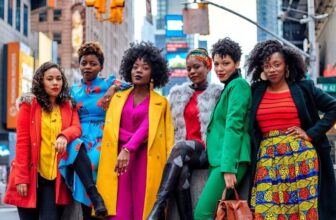Sustainable fashion is a growing movement that aims to reduce the social and environmental impacts of the fashion industry. While there has been progress in recent years, there are still many misconceptions and myths surrounding sustainable fashion. These misconceptions often hinder the adoption of sustainable practices and prevent the industry from fully embracing innovative solutions.
However, given the growing awareness of environmental and ethical concerns, it is essential to reevaluate and clarify these misconceptions. Ahead are seven myths of sustainable fashion that need to be debunked to promote and sustain true fashion innovations.
Sustainable fashion is more expensive
One common misconception surrounds sustainable fashion, often assuming it to be consistently pricier than its conventional counterpart. This notion frequently links sustainability and ethics with luxury brands, primarily because of their association with slow fashion. It’s a prevailing belief that if a clothing item carries a hefty price tag, it must have been produced sustainably and ethically.
However, it’s essential to unravel this belief and understand the strategy luxury labels employ, known as prestige or premium pricing. This strategy maintains high prices by tapping into the ideology of perceived value or benefits, such as exceptional quality, innovation, or exclusivity. Nevertheless, a high price doesn’t necessarily equate to ethically sourced or environmentally friendly materials. Furthermore, paying a premium for a product doesn’t guarantee fair treatment or better wages for the workers behind it.
These subtle deceptions and exaggerations can lead consumers astray, resulting in misconceptions about the true impact of their clothing choices. It highlights the importance of not solely relying on a brand’s claims. While certain sustainable brands may indeed have higher price points due to their ethical practices and superior materials, affordable sustainable options exist. Moreover, the long-term savings in terms of both environmental and economic factors often outweigh the initial investment.
Secondhand clothing is totally ethical and sustainable
Thrifting, often referred to as the practice of purchasing secondhand fashion, raises sustainability concerns. Surprisingly, only a fraction of donated items, typically 10-20%, find buyers in charity shops due to the lower quality of most donations according to the Council for Textile Cycling.
Consequently, a growing portion of these items either get incinerated or end up in landfills. The remaining portion is either repurposed for industrial use or sold to secondhand wholesalers, who, in turn, distribute them in bulk to other countries, primarily in the Global South.
Regrettably, a significant proportion of these secondhand clothes sent abroad go to waste, either because it is surplus or considered unsuitable for use. For instance, in Kantamanto, one of Ghana’s largest secondhand markets, receives over 15 million items arrive each week, with 40% of the clothing in each shipment being discarded into landfills or subjected to incineration.
Sustainable fashion is only for the wealthy
Sustainable fashion is not solely a privilege of the wealthy. It’s increasingly accessible to individuals across different budget ranges. Affordable sustainable choices can be found in second-hand clothing stores, thrift shops, and clothing swaps. Also, a variety of sustainable fashion brands like H&M and ASOS, are broadening their range of products to accommodate diverse budgets.
In addition to high-end options, there’s a growing selection of mid-range and budget-friendly choices that prioritize eco-friendliness and ethical production. Even mainstream fashion retailers and fast fashion companies are incorporating sustainability into their offerings, making it easier for a wider range of consumers to embrace sustainable fashion without straining their finances.
Sustainable brands are 100% sustainable and only use sustainable fibers
Because the fashion industry lacks comprehensive regulations, there exists no universally accepted, let alone legally binding, definition of sustainability within it. Although materials like organic cotton and hemp are often hailed as sustainable, their environmental impact can still be significant if not managed responsibly.
It’s therefore important to consider the entire journey of organic materials such as fiber, from its creation to production, when assessing its sustainability. Beyond materials, we must also examine a brand’s practices, as sustainability is not solely determined by the choice of materials. Every unit of every product carries environmental and social consequences, spanning from its inception through manufacturing, consumer usage, and disposal.
Thus, if a brand manufactures a million units of organic cotton tees, the sustainability of those units cannot be solely attributed to the organic cotton used. Instead, we should inquire about their supply chain transparency, including precise supplier locations rather than just countries.
Are they paying fair wages and ensuring safe working conditions for their garment workers? What is their production volume, and how do they manage waste? Do they actively uphold Extended Producer Responsibility policies? These are the questions that provide a more comprehensive view of sustainability in the fashion industry.
Sustainable fashion is a fad
As the term “sustainable” implies, sustainable fashion represents a lasting commitment rather than a fleeting trend, addressing critical environmental and ethical issues within the fashion industry. This enduring transformation towards more responsible approaches is being propelled by consumer preferences, regulatory adjustments, and ethical principles. As consumers increasingly prioritize mindful choices, sustainable practices will gain further significance. Notably, sustainable fashion has evolved significantly, showcasing the creativity of innovative designers who craft stylish, timeless pieces that effortlessly compete with and surpass mainstream fashion trends.
Small changes don’t matter
Every small change in the fashion industry contributes to a shared positive impact. Small-scale initiatives, like the reduction of water consumption, the adoption of eco-friendly dyes, and enhancements in packaging, collaboratively contribute to a greater good. While there are skeptics who doubt the impact of individual actions such as opting for sustainable fashion or embracing the principles of slow fashion, it’s essential to recognize that these small shifts in consumer behavior can cumulatively yield significant benefits for both the industry and the environment.
Presently, technology is at the forefront of streamlining sustainable practices. Blockchain technology, for instance, is employed to monitor and validate the sustainability of supply chains. This innovation simplifies and brings transparency to the implementation of minor changes. Similarly, fashion brands have the opportunity to share their supply chain information, enabling consumers to make more informed decisions regarding their purchases.
Sustainable fashion cannot meet fast fashion demands
There’s an ongoing discussion about whether sustainable fashion can match the fast fashion industry’s demand for affordable and stylish clothing. However, sustainable fashion constantly demonstrates its adaptability and ingenuity. We know this because numerous sustainable brands introduce seasonal lines and stay current with fashion trends, showcasing their ability to stay competitive with fast fashion while emphasizing ethical and environmentally responsible methods.
The continuous innovation in sustainable practices, the adoption of circular fashion principles, and increased consumer awareness collectively contribute to the expansion of sustainable fashion, catering to a wide range of consumer preferences.
To revolutionize the fashion industry, a paradigm shift is required to elevate fashion as a dignified industry. Sustainability should not merely be a trend, a concern for a particular set of workers, or a public relations strategy. Instead, it should form the core of the business model, becoming a fundamental aspect of supply chain principles that encompasses corporate social responsibility and ethical values.
In addition to collaboration among themselves, consumers, policymakers, and businesses, brands should carry the responsibility of investing in their supply chains, ensuring fair compensation for workers, and sharing the risks that they often place on suppliers. Brands should literally grow up from traditional linear growth models and embrace circular business strategies. This entails embracing regenerative practices, slowing down production cycles, and producing fewer but higher-quality products.
Recognizing the genuine essence of sustainable fashion is key to transforming the industry and fostering innovation that aligns with environmental and ethical objectives. Contributing to innovativeness within the fashion industry, sustainable fashion can offer accessibility, style, and affordability, making it a viable option for both consumers and the industry as a whole.
Photo: Instagram.com/nkwo_official






